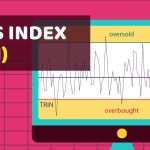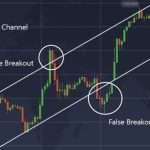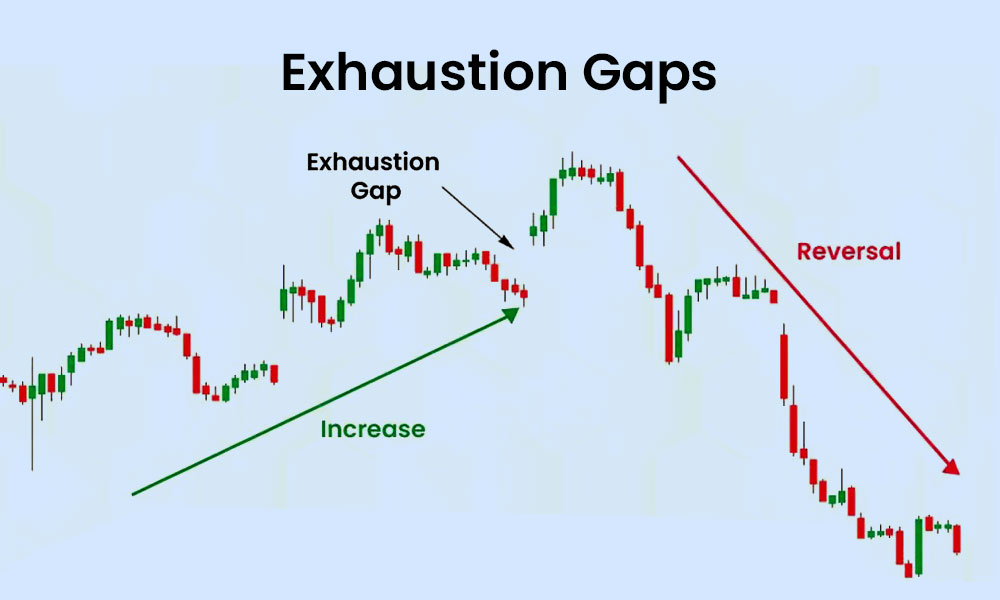
By ATGL
Updated April 2, 2025
The megaphone pattern represents a distinctive price formation that traders monitor to identify increasing market volatility. This technical pattern, characterized by higher highs and lower lows, creates a widening price structure that resembles a megaphone or broadening formation. By understanding how to identify and trade this pattern effectively, you can potentially capitalize on market fluctuations.
What Is a Megaphone Pattern in Trading?
The megaphone pattern in trading manifests as a broadening formation with two diverging trendlines — the upper trendline connects rising peaks, while the lower trendline connects descending troughs. Unlike the triangle chart pattern that demonstrates convergence, the megaphone pattern shows price action expanding over time, indicating heightened market volatility and growing uncertainty among market participants.
This pattern typically forms during periods of market indecision, when neither bulls nor bears maintain clear control. The resulting price action creates oscillations of increasing amplitude, with each swing producing more extreme price points than the previous one. Technical analysts often interpret this pattern as a signal of potential upcoming significant price movements, making it valuable when you’re focused on volatility-based strategies.
Megaphone patterns can appear in various timeframes and across different financial instruments, including stocks, commodities, and currency pairs. Their formation provides critical insights into market psychology, revealing growing divergence in market participants’ price expectations.
Identifying Megaphone Patterns
Accurately Recognizing megaphone patterns requires attention to several key characteristics that distinguish them from other trading patterns you should know:
- Unique Shape and Structure: The most distinctive feature of the megaphone pattern is its expanding price range. Look for at least two higher highs forming the upper trendline and two lower lows creating the lower trendline. Unlike the bull flag pattern or bear flag pattern that shows consolidation, the megaphone demonstrates amplification of price movements.
- Volume Dynamics: Authentic megaphone patterns typically display increasing volume during price swings. Volume often shows particular intensity during the formation of new highs and lows, validating the pattern’s significance. This contrasts with the head and shoulders pattern, where volume typically decreases during the formation of the right shoulder.
- Recognizing Patterns Across Asset Classes: While the basic structure remains consistent, megaphone patterns may exhibit subtle variations across different markets and timeframes. For instance, in highly volatile markets, the pattern may develop more rapidly and with steeper trendlines compared to stable markets where the expansion occurs more gradually.
When analyzing potential megaphone patterns, distinguish them from other broadening formations like the triple top pattern by confirming the clear expansion of price ranges rather than price movements within a defined range.
How to Trade Megaphone Pattern
Trading the megaphone pattern effectively requires systematic approaches tailored to its unique characteristics:
- Breakout Trades: A common strategy involves waiting for price to break beyond the pattern’s boundaries. When price definitively moves above the upper trendline or below the lower trendline, traders may enter positions in the direction of the breakout. This approach differs from trading the cup and handle pattern, which typically offers only upward breakout opportunities.
- Swing Trading Approaches: Alternatively, some traders capitalize on the oscillations within the pattern itself. This strategy involves entering long positions near the lower trendline and short positions near the upper trendline, aiming to profit from the price swings between these boundaries. Unlike the double bottom pattern that typically signals a reversal, the megaphone’s swings can be traded repeatedly.
- Entry and Exit Points: Precise entry points can be determined by combining the megaphone pattern with other technical indicators. Fibonacci retracement levels or momentum oscillators can help identify optimal entry points, while trailing stops or predetermined profit targets establish effective exit strategies. This multi-indicator approach provides more reliable signals than relying solely on pattern recognition, similar to how traders might supplement the bear pennant pattern with additional confirmation signals.
The increasing volatility characteristic of megaphone patterns demands heightened attention to timing and precise execution compared to more stable patterns like the rising wedge pattern.
Risk Management in Megaphone Pattern Trading
The expanding volatility inherent in megaphone patterns necessitates robust risk management:
- Importance of Position Sizing: As price swings grow larger within the pattern, implementing appropriate position sizing becomes crucial. Traders often reduce their standard position size when trading megaphone patterns to accommodate the heightened volatility and potential for rapid adverse price movements.
- Managing Dynamic Market Risks: Traditional stop-loss strategies may require adjustment when trading megaphone patterns. Rather than using fixed stop-loss levels, traders might implement adaptive stops that account for increasing volatility. This often means placing stops at technical levels outside the pattern’s immediate price action or using ATR (Average True Range) based stops that adjust with changes in volatility.
Effective risk management distinguishes successful megaphone pattern traders from those who encounter significant losses during the pattern’s unpredictable movements.
FAQs about Megaphone Pattern
Is a Megaphone Bullish or Bearish?
The megaphone pattern itself is neither inherently bullish nor bearish—it primarily indicates increasing volatility and market uncertainty. The pattern’s ultimate direction depends on where and how it resolves, with breakouts occurring in either direction. Context matters significantly, as the prevailing trend before the pattern formed can influence its eventual resolution.
What Is the Price Target for the Bullish Megaphone?
The price target for a bullish resolution of a megaphone pattern typically equals the height of the pattern at its widest point, added to the breakout level. For example, if a pattern has a $10 range at its widest point and breaks out upward at $50, the theoretical target would be $60.
Is the Megaphone Pattern Continuation or Reversal?
The megaphone pattern can function as either a continuation or reversal pattern depending on the market context. It often appears as a reversal pattern at market tops, signaling potential distribution phases. However, it can also emerge within an established trend as a temporary period of volatility before the trend resumes.
What Happens After a Megaphone Pattern?
Following a megaphone pattern, markets typically experience a decisive move in one direction after breaking out of the pattern’s boundaries. This move often demonstrates reduced volatility compared to the erratic swings within the pattern itself, providing potentially clearer trading opportunities.
Making the Most out of Megaphone Pattern With Above the Green Line
Mastering megaphone pattern trading requires both technical knowledge and practical experience. These expanding formations represent significant market psychology shifts and can provide valuable trading opportunities when properly identified and traded.
Above the Green Line provides comprehensive resources and advanced technical analysis tools designed to help traders identify and capitalize on patterns like the megaphone formation. Our educational materials and market insights give traders the edge needed to navigate volatile market conditions effectively.
To enhance your pattern recognition skills and develop comprehensive trading strategies that incorporate megaphone patterns and other technical formations, look to Above the Green Line’s membership programs for professional guidance and sophisticated analytical tools. Take your trading to the next level by exploring our membership options and gaining access to expert market analysis that can help you identify these potentially profitable patterns with greater confidence and precision.






